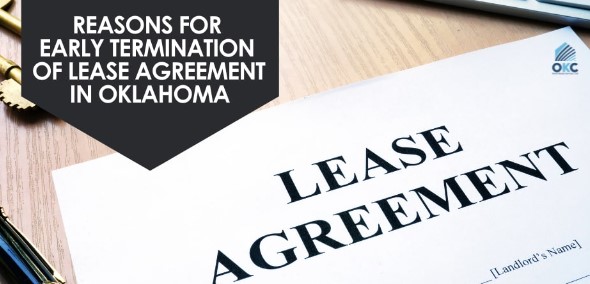Lease Termination Agreement Form

How to Handle Early Lease Endings with a Lease Termination Agreement Form?
Ending a lease agreement before its scheduled expiration can be a complex process for both tenants and landlords. Whether driven by a change in circumstances, job relocation, or other unforeseen events, early termination often requires careful legal handling to avoid disputes and financial repercussions. A Lease Termination Agreement Form is the key document used to formalize the process of ending a lease prematurely. This blog will explore how to handle early lease endings using this form, ensuring that both parties are protected and the transition is smooth.
Understanding a Lease Termination Agreement
A Lease Termination Agreement is a legal document that provides the terms and conditions under which both the tenant and landlord agree to end the lease before its official expiration date. The form serves to formalize the end of the contract and can help prevent misunderstandings, offering legal protection to both parties. Without a proper agreement, early lease terminations can lead to disputes over rent payments, security deposits, and potential damages to the property.
Reasons for Early Lease Termination
There are numerous reasons why tenants or landlords may seek to terminate a lease early. These could include:
- Job relocation or change
- Financial hardship
- Health issues
- Property sale by the landlord
- Lease violations by either party
Regardless of the reason, it’s important for both parties to approach the termination professionally and with mutual agreement. By using a Lease Termination Agreement Form, both parties can agree to the terms and avoid any potential legal problems.
Key Elements of a Lease Termination Agreement
To effectively handle early lease terminations, the Lease Termination Agreement Form must cover specific essential elements. These elements ensure that all aspects of the early termination are addressed clearly:
1. Names and Address: Include the names of both the landlord and tenant, as well as the address of the leased property. This ensures that the agreement applies specifically to the involved parties and property in question.
2. Termination Date: Specify the agreed-upon date when the lease will officially end. Both parties should have a clear understanding of when the tenant will vacate the property and stop paying rent.
3. Final Rent Payment: Determine the amount of rent due up to the termination date. If the tenant is r3.equired to pay rent up until the move-out date, this should be clearly stated in the agreement.
Security Deposit: Outline how the security deposit will be handled. Will it be refunded in full, or will deductions be made for damages or unpaid rent? This section should clearly define how the landlord will return or withhold any part of the deposit.
Mutual Release of Obligations: Include a clause that releases both parties from any future obligations related to the lease. This clause is important to prevent either party from making claims after the lease has ended.
Termination Fees: If the lease includes an early termination fee, this should be outlined in the form. This fee compensates the landlord for potential financial losses due to ending the lease early.
Condition of Property: Indicate the expected condition of the property upon termination. It’s important to clarify that the tenant should return the property in the condition it was received, aside from normal wear and tear.
Read also: Second Mortgage Rates: Navigating the Financial Landscape
The Process of Early Lease Termination
To ensure a smooth early lease termination process, follow these steps:
Review the Lease Agreement: Before initiating the termination, both parties should carefully review the original lease. Some agreements contain clauses that address early terminations, including penalties or fees.
Discuss Terms with the Other Party: Both the landlord and tenant should have an open conversation about the terms of the termination, including any financial implications and the expected move-out date.
Complete the Lease Termination Agreement Form: Once both parties agree, they can formalize the terms using the Lease Termination Agreement Form. It’s crucial that both the tenant and landlord sign the document to make it legally binding.
Ensure Proper Notice: Depending on state laws, tenants may be required to provide a certain amount of notice before terminating the lease. Check local regulations to ensure compliance.
Legal and Financial Considerations
It’s important to keep in mind that early termination of a lease often comes with legal and financial consequences. The tenant may be responsible for rent until a new tenant is found, or for paying an early termination fee. For landlords, ending a lease early may mean potential income loss, so clear communication and agreement on financial matters is essential.
Conclusion
Handling early lease endings with a Lease Termination Agreement Form ensures that both landlords and tenants can part ways without unnecessary complications or disputes. By including all necessary elements in the form and following a structured process, both parties can reach a fair and legally binding agreement. This approach not only simplifies the early termination process but also provides clear protections and terms that help avoid future disagreements.

